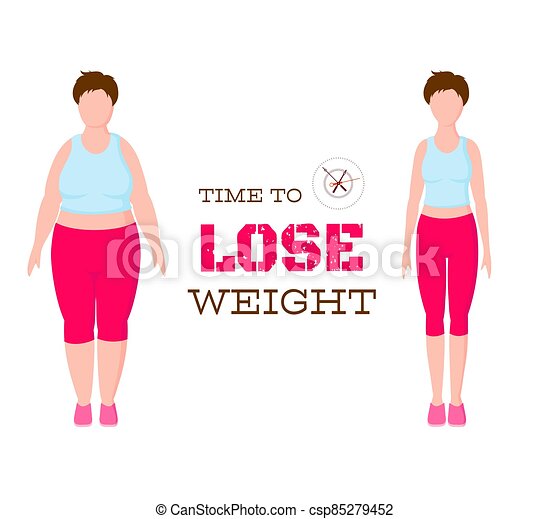
It is great for everyone, no matter their age, to eat a heart-healthy lifestyle. This type of diet encourages fresh and healthy foods and will help you to lose weight. This article will explain more about these types diets. These are some guidelines to keep in mind when following this type of diet. Start with your daily meals.
Ideal for everyone are heart-healthy diets
A heart-healthy diet is beneficial for all ages. The earlier they start, the better, as it reduces their chances of developing heart disease and allows them to practice good eating habits throughout their life. It is important to eat colorful foods that are low in saturated and high in fiber. Eat more fruits and vegetables, such as oranges and apricots, and cut back on processed foods. Choose lean meats with less than 10% fat. Avoid fattening foods by limiting your intake of butter.
Fatty fish like salmon and albacore tuna are good for your heart. These foods contain omega-3s. They protect your heart health, and help reduce the risk for heart disease. Monounsaturated oil, such olive oil, is a good option to replace unhealthy fats.
They encourage weight loss
The cardiovascular diet menus emphasize healthy eating and avoiding processed foods. Many of these diets encourage the consumption oily fish and other vegetables and limit the intake saturated fats as well as sugar. They also encourage the consumption of flaked almonds, low-fat yogurt, and blueberries.

It can be difficult to adhere to cardiovascular diets, especially if your eating habits aren't used to restricting your food intake. Although you can add herbs and spice to your food, it is best to avoid high-calorie condiments and sauces. You should also limit your alcohol intake when eating out.
They promote heart and lung health
Cardiovascular diets encourage people to eat a wide variety of heart-healthy foods in order to lower their risk of developing cardiovascular disease. They advise people to limit their consumption of processed foods and to eat lean meats and fish. They also restrict their intake of fat and sodium. These heart-healthy menus also limit the consumption of sodas, sugar-sweetened beverages, and other types of processed food.
Cardiovascular diets include whole grains, fruits and vegetables as well as oily fish and low-saturated butter. Sugar and red meat should be avoided. Refined carbohydrates like white bread should be avoided.
They encourage fresh foods
The cardiac diet encourages eating fresh fruits and veggies, whole grains, oily salmon, and other heart healthy foods. The diet discourages the consumption of processed food, sugar, red meat and other unhealthy foods that can raise your risk of heart disease. The menu can be helpful in helping you to make healthy decisions when dining out. It can also help you plan your meals. You should also include daily exercise to maintain cardiovascular health.
The cardiac diet menu has strict guidelines and may cause adverse effects if you don't follow the guidelines. The restrictions on the number of foods that you can eat at certain meal times are also limited. The majority of meals are made up of protein, fruits, and vegetables. The other two days are spent on a normal diet.

They reduce sodium intake
A key element of a cardiac diet is to limit sodium intake. You should look for foods with lower sodium levels. Many sodium-rich foods can be dangerous for your heart. You can substitute citrus juice or salt-free seasonings to achieve this. The least processed cuts of meat and poultry should be purchased when shopping. Avoid sauces, ready-to eat pasta and flavored rice. Ask for nutritional information when ordering from restaurants and choose a dish with fewer sodium. Split the meal with someone else if you can.
A heart-healthy diet menu can help you lose weight, lower cholesterol levels, and improve overall health. Eating heart-healthy foods can also increase energy levels. It all depends on your lifestyle, as well as any risk factors.
FAQ
What Amount of Weight Can You Lose In A Week?
The amount of weight that you can lose will depend on how high your body fat percentage is. The first thing to do is to calculate how much weight you want to lose and then find out what your BMI (Body Mass Index) is. Your BMI will tell you how much weight to lose. If your BMI is 25 or greater, you're overweight. If your BMI is 30 or higher, you're obese.
Your BMI is calculated at 28.7 if your weight is 200. To get to a healthy weight range, you'd need 70 pounds of weight loss. To see if you're overweight, visit www.healthyminds.com/bmi/.
This formula can be used to calculate how many pounds you will lose each week once you have determined your BMI.
(Your Goal Weight - Current Weight)/BMI * 7 Number Of Pounds Lost Per Week
To lose 50 pounds in a month, you would need to exercise for 2 weeks. That's 56 days divided by 7 pounds per day. That's 8.3 pounds per week.
You could also try this calculator from www.weightlosscalculator.net. It provides an estimate of the number of calories you should consume each day to lose 12 pound per week.
What is the best activity for busy people?
You can stay fit by exercising at home. You don't have to join a gym or go to a fitness center to stay fit. You can perform simple exercises at your home without needing expensive equipment.
You will need a pair, mat, chair, timer, and some dumbbells.
The most important thing is ensuring you are consistent with your workouts. You may lose motivation if you skip a few days.
Three times per week is a good way to begin. This could be squats and lunges as well push-ups, pull ups, pull-ups (dips, curls), etc.
Once you have mastered the basic movements, it is possible to move on to other types such as running and jumping rope, skipping or yoga, Pilates, dance, swimming, weight lifting, tennis, golf, playing basketball, soccer, volleyball, badminton or squash.
You should choose an exercise program that suits your life. If you work long hours, you may want to avoid exercise programs that consume too much energy.
If you're a night-owl, you might consider working out in the evenings rather than in early morning.
Remember to listen to your body and stop when you feel tired.
What's the difference between intermittent fasting versus calorie restriction
Calorie restriction is when you eat less than your body needs. Intermittent fasting, on the other hand, doesn't restrict calories. Intermittent fasting focuses more on eating fewer calories every day.
Intermittent fasting allows you to indulge in foods that you love while feeling guilt-free.
Each method has its pros and cons. It is up to you to decide which method you prefer.
How can you lose weight?
Losing weight is one of the most popular goals among people who want to look good. People desire to lose weight because they want to live longer, feel healthier, and live longer. There are many options for losing weight. Cardio training, strength training yoga, pilates running, swimming and cycling are just a few of the options. Each exercise type has its benefits and drawbacks. Walking would be the best exercise if you are trying to lose weight. For building muscle mass, weight lifting is the best choice. This article will explain how to lose fat and what exercise to do.
The first thing to consider when losing weight is what kind of diet plan you should follow. It doesn't mean you have to eat less, but it is important to avoid junk food and eat more fresh foods. Aim to consume no less than 2200 calories each day. If you want to lose weight faster, you should reduce your calorie intake even further. You will lose fat faster this way.
Get active if you want fast weight loss. Exercise will help you burn calories and boost your metabolism. You must combine exercise and a healthy diet to lose weight. When you exercise, you use up energy, and therefore you won't be able to eat as much. You will see a faster rate of fat loss if you exercise regularly. Also, regular workouts help you maintain a healthy lifestyle. They can help you keep fit and prevent conditions such as heart disease, diabetes, hypertension and obesity.
Try to walk as often as possible. Walking can burn around 500 calories an hour. Walk 30 minutes per day to burn around 1500 calories. You will therefore lose approximately 1 pound per week. You can also run for 10 minutes or jog. Running burns approximately 1000 calories an hour. You should run 20 minutes each day if your goal is to lose five pounds in just three weeks.
The best way to lose weight? Combine exercise and healthy eating habits. Try to find a balance between these two factors.
Can I eat fruit while on intermittent fasting
Fruits are great for your health. They are rich sources of vitamins, minerals. Fiber, antioxidants, as well other nutrients. However, they do contain sugar which can cause blood glucose levels spike. This can lead to insulin resistance and weight gain. If you're looking to lose weight with an IF diet then you should choose fruits that are low in glycemic.
Statistics
- One study in 9 active men found that HIIT burned 25–30% more calories per minute than other types of exercises, including weight training, cycling, and running on a treadmill (18Trusted Source (healthline.com)
- A 12-week study in 20 women with obesity found that walking for 50–70 minutes 3 times per week reduced body fat and waist circumference by an average of 1.5% and 1.1 inches (2.8 cm), respectively (healthline.com)
- Another study found that 24 weeks of weight training led to a 9% increase in metabolic rate among men, which equated to burning approximately 140 more calories per day. (healthline.com)
- According to Harvard Health, it's estimated that a 155-pound (70-kg) person burns around 167 calories per 30 minutes of walking at a moderate pace of 4 mph (6.4 km/h) (5). (healthline.com)
External Links
How To
How to Intermittent Fasting
Intermittent fasting is a dieting method where you normally eat one day per week, usually Monday through Friday. This is a way to cut down on calories while still getting enough nutrition. This will allow you to burn fat more quickly than eating regular meals throughout the week.
The most common form is to limit calories for certain days. This means you could skip breakfast every morning and still eat what you want the rest of the week. You could also choose three small meals instead of two large meals per day.
There are many types of intermittent fasting. There are pros and cons to each type of intermittent fasting. Alternate-day fasting is the easiest method to get started because it doesn't require any significant lifestyle changes. But, there are some people who find it hard to follow such a strict schedule. These people might prefer to try different methods.
I recommend alternate-day fasting if you're starting an intermittent fasting regimen. This will allow to slowly transition to more extreme fasting regimens without drastically changing your lifestyle.